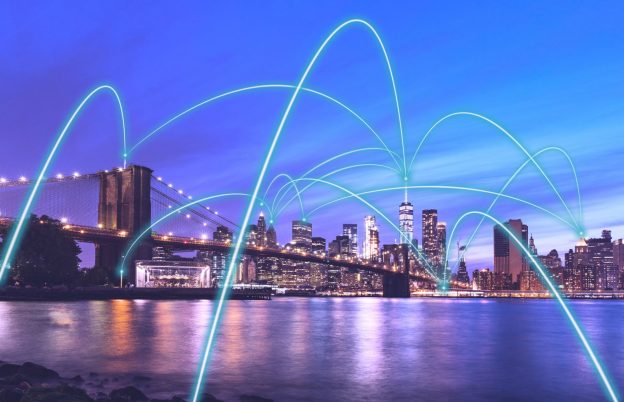Telecommunication providers in New York may at times be wary of municipal leasing, purchasing, or public property use requirements when it comes to constructing wireless infrastructure on municipal lands. Providers and municipalities alike nevertheless have numerous opportunities under the law to undertake such projects on municipal lands, and should explore them as part of expediting the deployment of wireless services to local communities.
Municipalities have always had the ability to lease and sell property to providers. This right is rooted in Article IX of the New York State Constitution,1 which states that municipalities have the ability to dispose of land not devoted to public use. This right is further incorporated into Village Law,2 General City Law,3 and Town Law4 provisions related to municipal authority over public lands.
Some municipalities’ charters and codes may have additional requirements, including the need for a lease of public lands to incorporate a public benefit.5 The sale or lease of municipal property, particularly that not located in a public right of way, is considered a discretionary action under New York’s State Environmental Quality Review Act, which can add some additional review processes.6 In towns, such a disposition is also expressly subject to a permissive referendum under Section 64(2) of Town Law.7
Another nuance to these transactions is to evaluate any “parkland” considerations. In Friends of Van Cortlandt Park v. City of New York 8 the New York Court of Appeals noted that alienation of parkland requires legislative approval from the State, and held that long-term non-park uses of public parkland must provide a public benefit. While providers have in some cases been able to leverage how their services promote economic development, increase public safety, and improve service – the New York State Office of Parks, Recreation, and Historic Preservation has advised that leases of parkland to telecommunication providers should have a 25-year cap; have a condition that if use ends, the tower be removed, and land restored; and that the fair market value of the lease be dedicated to capital improvements to existing park facilities or the purchase of additional parkland. These “requirements” can create significant limits on the disposition of parkland.9
Notably, under the Telecommunications Act of 1996,10 the FCC’s 2018 Small Cell Order,11 the New York State Constitution,12 and the New York Transportation Corporations Law,13 municipalities have very limited non-proprietary regulatory authority to manage access and use of public rights-of-way for wireless facilities. As a result, municipalities cannot deny access – they can regulate the reasonable time, place, and manner of small cell installations in accordance with federal law, and these regulations must incorporate clearly-defined and ascertainable standards that do not materially impact the deployment of wireless facilities (particularly in comparison to cable and other wireline broadband infrastructure).
We are at a point in time where municipalities should appreciate the public benefits of wireless telecommunication infrastructure. Steps are being taken at the federal and state levels right now to expand accessibility and funding for telecommunication infrastructure, particularly in rural and/or underserved areas of New York. The Treasury Department has issued a Final Rule regarding the use of funds under the American Rescue Plan Act (“ARPA”) for broadband infrastructure;14 the NTIA is in the process of finalizing new broadband maps to guide where federal funding may be utilized;15 the recently-passed federal infrastructure bill allocated $65 billion to expand high-speed internet access to rural and underserved areas;16 and Governor Hochul has recently announced the $1 billion Connect All Initiative to expand broadband connectivity.17 Municipalities that want to address local broadband connectivity for their constituents need to, at a minimum, consider rolling back prohibited regulations, leverage public lands where viable, and open up their rights-of-way to new technologies. Municipalities such as New York City, with its 2020 Internet Master Plan18 and a related RFP for Open Networks;19 and Yonkers, with its Y-Zone Initiative utilizing citizens broadband radio service (“CBRS”) technology;20 are strong regional examples of communities taking such important steps.










